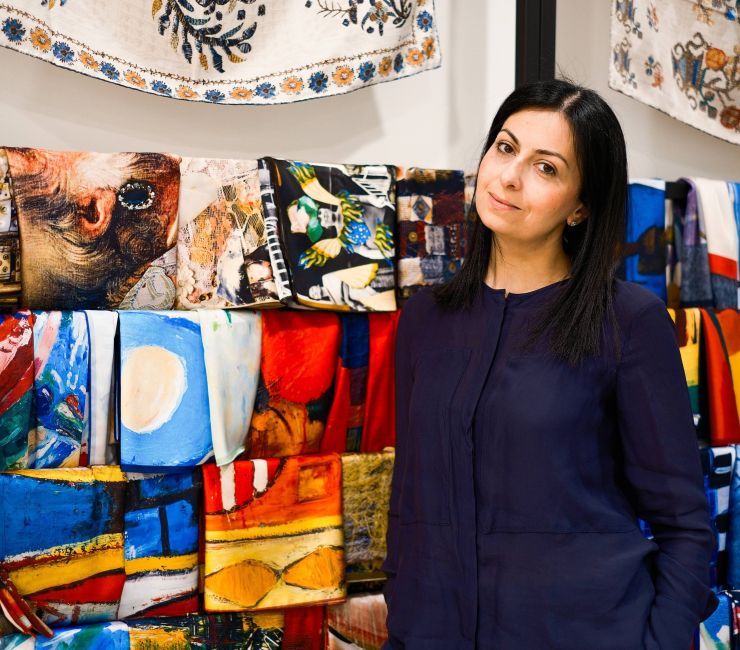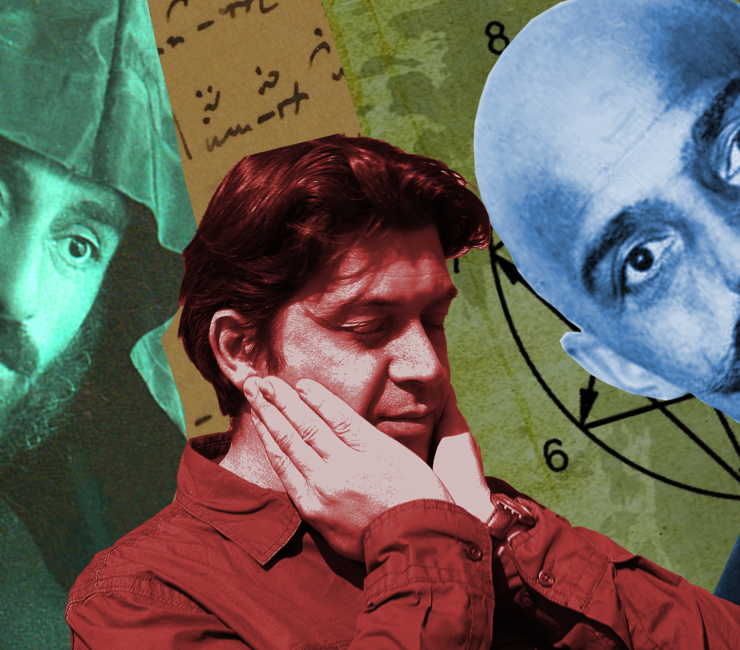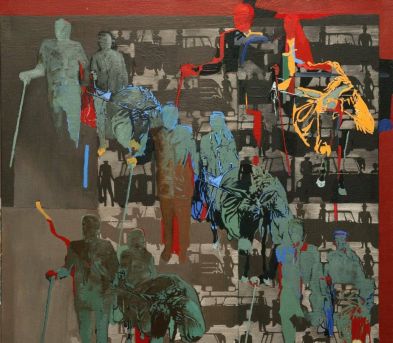Featured Content

They say the Bosphorus Bridge in Istanbul—Bolis to Armenians—connects West and East, Europe and Asia. But for Antonia Arslan, the true bridge between the Orient and Europe is not a structure, but a people: the Armenians.

A collage of vibrant colors and distinct patterns, Artuyt is a masquerade composed of the very best of Armenia’s art, past and present. In an exclusive interview with h-pem, founder Arevik Arakelyan shares her passion for fashion and art, the backstory behind the brand, and why it's important to showcase Armenia’s artistry.
Submissions

In the summer of 2016, Souren Papazian, a then-recent grad from Columbia University’s Computer Science program, was placed in Artsakh for three weeks as a part of his community work as a Luys Foundation scholar.
“I found the people of Artsakh to be very different from folks in the rest of Armenia—different even from spyurkahais [Diasporan Armenians]. Just a different mindset and philosophy: reserved but kind, they don’t talk much, very into nature,” he explains.
Souren’s submission to h-pem is a series of 17 photographs taken on his iPhone during those three weeks in Artsakh—a collection of the faces and places that spoke to him most.
Most popular

As a kid, three VHS tapes I’d play over and over—to a point, where I had memorized every single word recorded: Disney’s “Aladdin,” the first “Harry Potter” movie (insert “Sorcerer’s” vs. “Philosopher’s” debate here) and, of course, the funky, gospel-soundtracked “Hercules.”
You remember the lyrics: "Who put the 'glad' in 'gladiator?' HERC-U-LES! Whose daring deeds are great theater? HERC-U-LES!"
All 9-year-old geeks have obsessed over Greek mythology, Ancient Egyptian history, or dinosaurs and fossils at one point. My weakness: the false gods of Mount Olympia! We Armenians aren’t too different from the Greeks, from geopolitical oppression by neighboring empires, to heavy-liquor-and-folk-dance feasts, our histories often click in harmony. And that’s especially the case for our mythologies where our gods aren’t much different (or less extravagant!). Which gods are the most popular in Armenian mythology and what features make them our all-time-favorites? Read on to find out!

You do not see him on stage, yet Levon Eskenian has been taking his world-class Gurdjieff Ensemble to major festivals and music venues around the world, rendering ethnographically authentic music on traditional Eastern folk instruments and evoking the deep stirrings of ancient rituals. While invitations continue to pour in, we meet the man behind this unprecedented musical excavation, which has opened a new page in classical music.

In this exclusive interview, Serj Tankian speaks candidly with h-pem editor Rupen Janbazian about everything from the Armenian community's reactions to System of a Down's early days to his move to New Zealand, his years of activism, and his lifelong love for Armenian culture.
Multimedia guide

These are trying times: The world is being overrun by an insidiously contagious virus, schools and businesses have shuttered, and people all across the world are physically locked-in and virtually logged-on.
Since the advent of the internet, many have posited whether the invention can bring us closer or drift us further apart. For the time being, our “real” world has been suspended and moved to a “virtual” reality. It is perhaps the biggest migration in the shortest span of time in history. If this crisis has taught us anything, it’s that we all need connection, community, and comfort.
One of the heartwarming sides of the COVID-19 pandemic has been an explosion of all three C’s—whether it’s neighbors singing songs from their balconies, museums posting exhibitions online for free, or musicians livestreaming their concerts.
Art is the antidote...

What happens when you defy tradition? In the gripping short family drama, “I Promised Her Life,” an Armenian mother tackles the interplay between tradition and agency at her daughter’s funeral. The result is a devastating rendering of death and the afterlife through cultural superstition. Watch the film online, for free!

Stomp your feet to this latest Collectif Medz Bazar tune, full of raging emotional envy and a continuous pumping beat—a reflection of uncompensated affection (sans-melancholy). Directed and edited by the colorful genius behind their extravagant "Poshmanella" video, Samuel Buton, and shot at the New Morning in Paris, the “Inch G'ella” music video perfectly presents the second single from their third studio album, “O”—another collection of multilingual indie-folk-experimental hits from the eclectic group.
Support h-pem with a financial gift!








